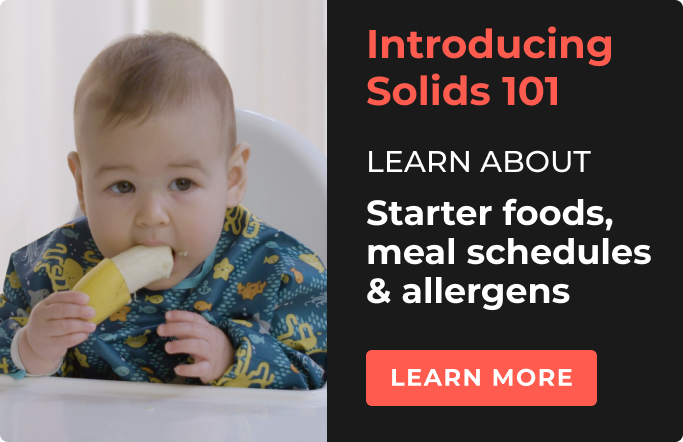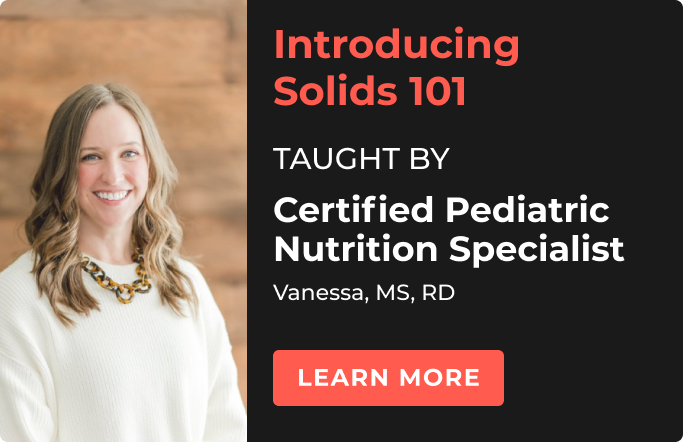As a new parent, the idea of starting your baby on solid foods can be exciting, daunting, or a little bit of both. For every cute picture on Instagram of a chubby baby with a big smile and a face full of peas, there is a new article in your feed with “updated guidelines” on when and how to introduce solids. It can seem overwhelming — but it doesn’t have to be.
Your baby is the best source of information about when to dive in. The American Academy of Pediatrics (AAP) and the World Health Organization (WHO) recommend that infants can start solid foods around six months of age but never before four months, it is also important to know your baby and watch for signs of readiness. When you think your baby is ready, check with your pediatrician, make sure you know how to safely introduce solids, and have a good handle on all the tips and tricks for making this introduction to first foods as smooth as possible.
How can you tell when it’s time to break out the high chair? Look for these five signs that your baby is ready to start eating solids.
1. They hold their head up independently. Remember when your babe was a newborn and you always had to support their head? Those days should be confidently behind you.
2. They sit upright on their own or when supported. To eat safely, your baby needs to be able to sit comfortably in their high chair or on your lap. It’s okay if you need to give them a little support, but they should be reasonably stable in a sitting position.
3. They have doubled their birth weight or weighs around 13 pounds. This lets you know that they're generally healthy and growing well on their current diet before you start introducing new foods to their body.
4. They can move food from the front of their mouth to the back of their tongue. This can seem like a chicken and egg scenario — how do you know if they can do this without giving them food? — but it can be quickly assessed with a few Cheerios or baby puffs. If they can put it in her mouth and move it in the right direction, you’re in good shape.
5. They're interested in eating. Many babies make their interest in food known loud and clear, watching you with fascination while you eat, reaching for your food, imitating chewing motions, and generally turning into a very excited little critter whenever food is around. They may be small, but they're an excellent communicator. When they're grabbing bites from your plate, they're telling you that they wants in.
If you’re wondering if your baby is ready to start solid foods, simply make sure they're at least 4 months old and displaying the capabilities listed above. Then go forth and eat! Introducing solids can be a fun adventure for you and your little one.
Pro-tip: There's a way to skip feeding your baby purées altogether, so your baby can participate in family meals from the start. Before you start solids, learn about this method in our online course Introducing Solids 101: From Purees to Baby-Led Weaning, taught by a leading pediatric nutritionist. You’ll get more details on introducing solids as well as tips on meal-planning, nutrition guidelines, allergies, and more.




